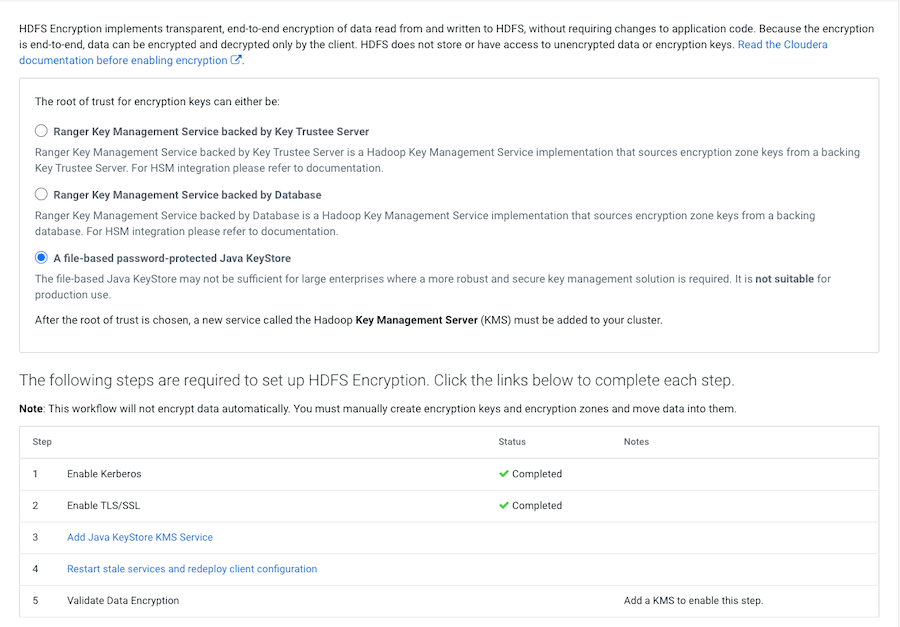Installing a Java Keystore KMS
The tasks and steps for installing a Java KeyStore Ranger Key Management System (KMS) service to the cluster for your HDFS data-at-rest encryption.
Describes how to install a file-based password-protected Java KeyStore KMS service to your cluster. The Java KeyStore KMS service uses a password-protected Java KeyStore for cryptographic key management. This option does not include HA.
The following image shows the Set up HDFS Data At Rest Encryption page. When you select your encryption keys root of trust option, a list of tasks that you must do to enable encryption to-and-from HDFS is displayed.
You complete each task independently from the other tasks. Where, the task’s Status column indicates whether the step has been completed and the Notes column provides additional context for the task. If your Cloudera Manager user account does not have sufficient privileges to complete a task, the Notes column indicates the privileges that are required.

- Enable Kerberos
- Enable TLS/SSL
- Add the Java KeyStore KMS Service
- Restart the stale services and redeploy the client configuration
- Validate the Data Encryption
- The cluster in which Cloudera Manager and the Cloudera Ranger service is installed, is up and running.
- Communication through secure connections is enabled with the Transport Layer Security (TLS) protocol and your network authentication is enabled with the Kerberos protocol.
Adding the Java KeyStore KMS Service
The Set up HDFS Data At Rest Encryption wizard's installation step that installs the Java KeyStore KMS service on your cluster.
Describes the steps that add the Java KeyStore KMS service to the cluster.
Restarting the Stale Services and Redeploying the Client Configuration
The Set up HDFS Data At Rest Encryption wizard's step for restarting stale services and redeploying the client configuration.
Describes the steps that restart stale services after installing the Data-at-Rest HDFS Ranger KMS service option on your cluster.
Validating Data Encryption to-and-from HDFS
The Set up HDFS Data At Rest Encryption wizard's step for validating the data encryption to-and-from HDFS.
Describes the steps which verify that the Data-at-Rest HDFS Ranger KMS service option can successfully encrypt your data to-and-from HDFS.


